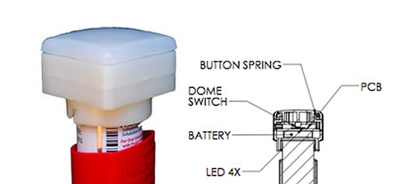Health Data Mojo – 1 App, 1 Tool, 2 Challenges
Alexandra Carmichael
June 4, 2010
 What do you get when you mashup open health data, government officials, and app developers?
What do you get when you mashup open health data, government officials, and app developers?
A “river of mojo” for health innovation. These are the words of Todd Park, CTO of HHS, who recently instigated the release of several government health datasets for public analysis.
Park revved up the audience at the sold-out Community Health Data Forum in Washington DC on Wednesday, infecting us with enthusiasm for the “lollapalooza of innovation” that he sees happening around health data visualization and sense-making. The Forum started with a showcase of apps that have been built in the 12 short weeks that the data has been available, then morphed into a mini devcamp where small groups had to come up with 3 health app ideas in 20 minutes.
I’ve written up the showcase on the Future Now blog at Institute for the Future, who was kind enough to sponsor my attendance. For Quantified Self readers, I wanted to share the coolest app and tool I saw related to self-tracking, as well as two developer challenges that might be of interest. Read on…
The App: Asthmapolis
 If you have asthma, you probably use an inhaler of some kind.
If you have asthma, you probably use an inhaler of some kind.
What if you could attach a device to the top of your inhaler that tracked the time and location of every dose you took?
You could build an asthma map. You could look for patterns in where and when your asthma flares up. You could share your data with other people, find asthma hotspots, and learn how to improve your asthma management.
This summer, you’ll be able to do just that. David Van Sickle gave an amazing demo of the Spiroscout he has built to attach to any inhaler. It uses GPS to record your location at every puff, and stores this along with the time. The data can be uploaded to your computer by USB, then mapped with the Asthmapolis app.
It’s a great example of lightweight mobile health and ambient self-tracking.
The Tool: Google Fusion Tables
For data analysis novices, or experts who just want to get a quick flavor of their data before diving into more thorough visualization, Google Labs’
fusion tables looks like a great place to start.
Roni Zeiger of Google Health showed how simple it is, with a minimal number of clicks, to import multiple data sources, visualize them in charts and
on maps, and share your visualizations. I was impressed with the ease,
flow, and speed of generating interesting results. It has an API, a limit of 250 MB per person, and a tour.
I’d love to hear if anyone has used this tool, and what you learned or created from it. Please leave a comment below.
Two Challenges: Apps for Health Kids and Health 2.0
And now for the developers in the audience. There has been an explosion of contests lately, as a way to spur healthy competition and gather crowdsourced ideas in a variety of fields. McKinsey even published a report on best practices for running a contest.
Here are two that relate to health data and Quantified Self-ers:
1. Apps
for Healthy Kids Competition
This competition, started by First Lady Michelle Obama,
is looking for apps that encourage kids or their parents to make healthy
food choices and get moving. After seeing what has been submitted so far, I think an easy, social, game-like way for kids to track their food or exercise would make a compelling entry. If you want to give it a try, the deadline is June 30.
2. Health
2.0 Developer Challenge
This challenge was announced this week, and the winners will be awarded as part of the Health 2.0 conference coming up in October in San Francisco. There will be a series of
“code-a-thons” from now until then, where developers will gather to build apps that incorporate the rich, liberated government
health datasets in some way. More details will be announced soon, but you can sign up today if you’re interested in joining a development team.
I hope that inspires some of you to get (more) involved with health data, for your own benefit and the benefit of others. As for me, I’m off to talk to some
folks in the Obama administration today about personal
informatics and the future of health data. Wish me luck!


